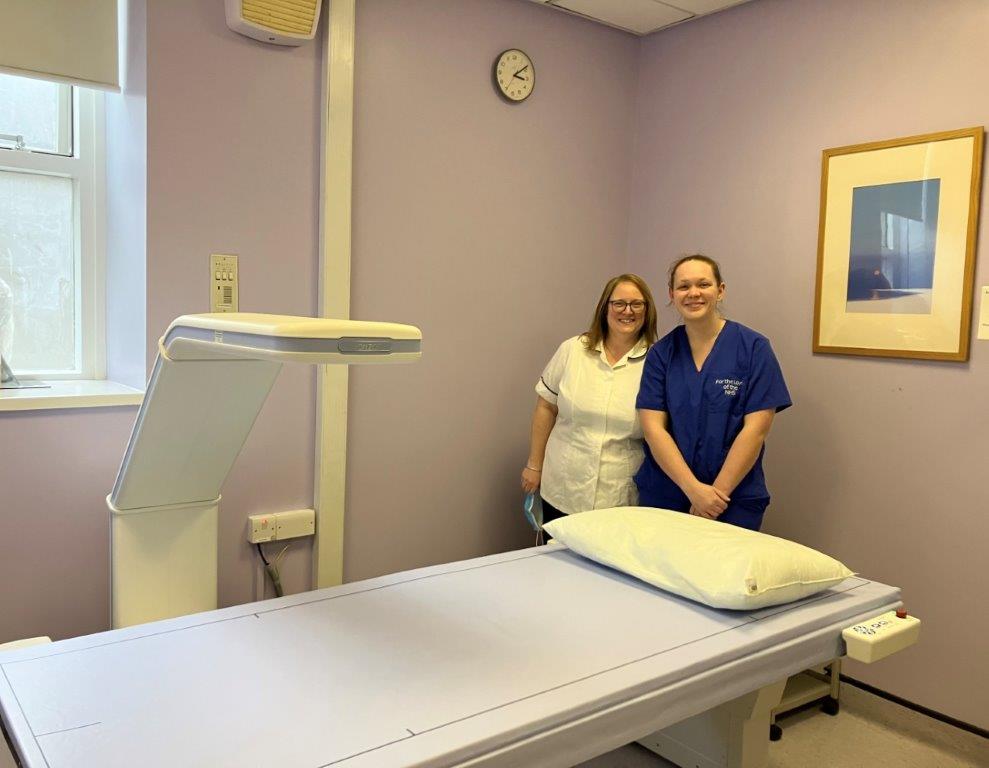
A new £100,000 scanner which assesses the strength of patients’ bones and allows specialists to calculate their risk of fractures and osteoporosis has been installed at St. Luke’s Hospital.
The new DXA scanner (which stands for dual energy x-ray absorptiometry) has been funded by Bradford Teaching Hospitals NHS Foundation Trust and uses low-dose x-rays to take measurements to work out the strength (density) of a patient’s bones.
DXA section manager and clinical technologist, Jane Threlkeld, said: “The replacement of our previous DXA system with a new scanner, which uses state-of-the-art software, will allow us to future proof our service and continue to provide a high standard of service to our patients, both new and old.
“The scanner will be used to monitor patients for osteoporosis and will also be a valuable addition to new, NHS-funded research that we are planning to undertake. The study uses AI technology to pick up incidental vertebral fractures from routine CT scans and then we can assess the patients on the new DXA machine.
“The fracture liaison service will then decide if treatment is required to strengthen the bones. The scanner also provides data to help assess what their risk of future fractures may be.”
Each year, more than 4,200 bone density scans are performed at St Luke’s, which treats patients from across the Bradford and surrounding districts. The scanner is based in the x-ray department, C Block.
Jane explained: “A bone density scan is a quick and painless procedure that involves the patient lying on their back on an x-ray table so an area of the body can be scanned. This is usually the hip and lower spine, and occasionally the forearm.
“As the scanning arm moves slowly over a patient’s body, a narrow beam of low-dose x-rays passes through the part of the body being examined. The analysis of the data produced allows us to assess the strength of a patient’s bones.”
The whole scan procedure usually takes around 10 minutes.
Click on the links below for a quick and easy way to check if you are at risk of fracture or osteoporosis: https://theros.org.uk/risk-checker/ or https://frax.shef.ac.uk/FRAX/
